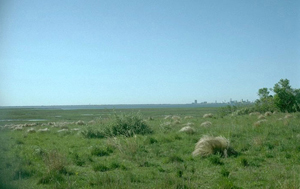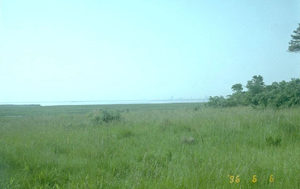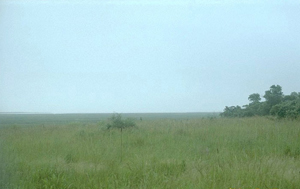"Class I Areas" were specifically identified by Congress in the federal Clean Air Act as worthy of extra protection. These areas have unique visual, ecological, or social values, or are particularly sensitive to the effects of air pollution.
Until 1984, the Brigantine – Edwin B. Forsythe Wildlife Refuge existed as two distinct refuges. Today, the combined refuge encompasses 42,000 acres of coastal habitat, over 90 percent of which consists of tidal marshes and meadows. About 6,600 acres of the refuge have been designated Class I wilderness area. The refuge serves as an important resting and feeding spot for migratory waterfowl including the endangered piping plover, black skimmer, and least tern; it also provides an ideal spawning ground and nursery for native fish. The remaining area of the refuge is dominated by pitch pine, oak forest, and white cedar-red maple swamps which are home to songbirds, white-tailed deer, box turtles, and other woodland creatures.
The Forsythe Refuge is nationally recognized as one of the East Coast’s premier birding spots, and hosts around 200,000 visitors each year. In addition, it supports hiking, biking, and scenic driving with eight miles of roadway, and three groomed trails. Saltwater fishing, crabbing, clamming from boats, surf fishing, and deer and waterfowl hunting are allowed during appropriate seasons. The refuge’s visitor center also serves as a community resource for environmental education programs. Plans have been made to increase visitor access through the development of new foot trails, docks, observation platforms, and an updated visitors’ center. See http://www.fws.gov/northeast/forsythe/ for more information.
Clean and Clear

Moderately Polluted and Hazy

Very Polluted and Hazy

For current visibility conditions, see the Brigantine, New Jersey Live Camera.